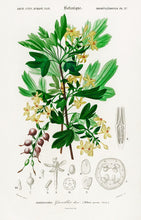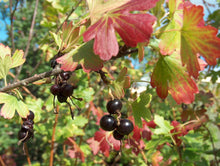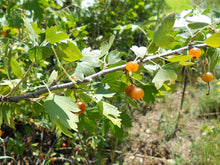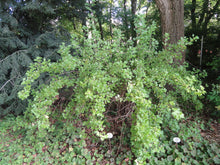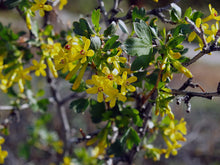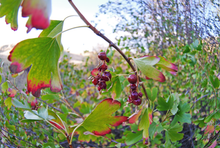Golden Currant
Regular price
$5.00
Sale
Ribes aureum
Origin: Colorado
Improvement status: Wild
Seeds per packet: ~25
BOTANICAL SAMPLE - NOT GERMINATION TESTED
Life cycle: Perennial
Also known as clove currant, buffalo currant, and pruterberry, golden currant is probably our most widely consumed wild currant or gooseberry. Native to Canada and much of the US (outside the Southeast), it can frequently be found growing around gravel banks and plains, especially around flowing water. Plants can grow in full shade, but are much less likely to produce fruit there. It is among the most drought-tolerant of the Ribes. The pretty yellow flowers are hermaphroditic, but yield can be increased by cross-pollination (so growing seed-grown plants instead of a single cultivar is a good way to ensure diversity in your stand). The plants attract pollinators including bees, butterflies, and hummingbirds. Various birds and mammals eat the fruit, which vary from round to oblong and from black to yellow, with golden orange being a common color (hence the name). Flavors can vary widely as well.
The fruits are edible raw, but like most Ribes species are often too sour for most people's taste. Some even have some bitterness. But with the addition of some sugar, maple syrup, or honey, they can make absolutely fantastic jams, jellies, juices, wines, and vinegars. The flowers are also edible.
Our seed comes from our friend Andy Hahn in Colorado. He writes this about them: "Our local population has fruit ranging from bright yellow to black that are pea size to marble size. The yellow and orange fruit have an apricot-like flavor, and the dark fruit has more of a dark berry flavor sometimes with a tannic note. I want to flavor a batch of mead with these!"
GROWING TIPS: Seed germination is enhanced by scarification (rubbing with sandpaper could help, or soaking in hydrogen peroxide for a few hours), but even without physically weakening the seed-coat good germination can be achieved by cold stratifying (in a refrigerator) for 2-3 months. Fall-sown seed works very well too. Under normal storage conditions, the seed can remain viable for 17 years or more. Space plants 3 to 4 feet apart in rows at least 6 or 8 feet apart. Ribes readily tip-layer, and send out rhizomes, so the plants can quickly spread over a few years. Full or partial sun is best, along with relatively neutral soil (6.6 to 7.5 pH).
NOTE: All photos are in the public domain, except the one with dark fruit, which comes from Annelis and is licensed under the Creative Commons Attribution-Share Alike 3.0 Unported license, and the one with the red fruit, which comes from Thayne Tuason and is licensed under the Creative Commons Attribution-Share Alike 4.0 International license.







